Chonguri is a four-bundled folk musical instrument, which has spread in Western regions of Georgia (Guria, Selfreglo, Adjara). Refers to a plug-in musical instrument group. In different places has minor differences in the design. Basically, the tool is used for accompaniation. Accompanied by Chonguri, it is customary to perform songs - both solo and more votes.
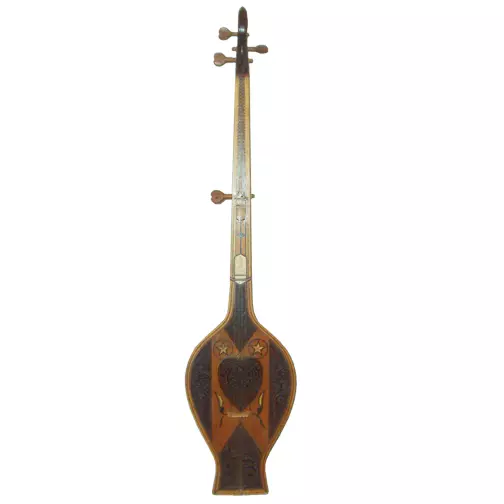
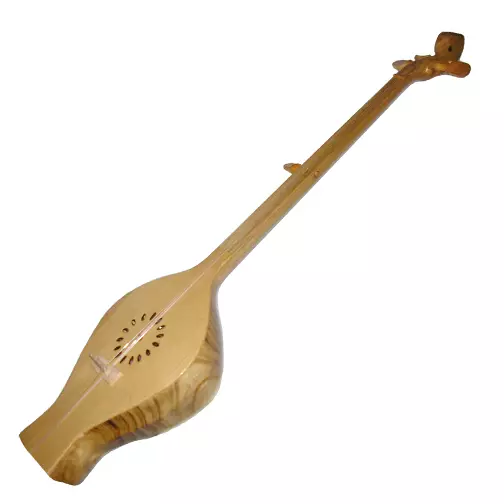
History
Traditionally, Chonguri perceived as a purely female instrument, but now men are often trained with a game on it. At the same time quite successful. More often, the Chonguri Party acts as an accompaniment to singing and dances, but it sounds solo very rarely. It is believed that this folk musical instrument appeared no earlier than the XVII century. Most likely, it is only an improved option for another pinch musical instrument in these edges - a ramp, which has only 3 strings.
The main reception of the game on the original Georgian tool is to break the three or four strings. Chonguri was improved in the 30s of the last century due to the skill of K. A. Vashakidze, K. E. Tsanava, S. V. Tamarashvili and other specialists. There is a Chonguri family, which includes such tools: Prima, bass and double bass. These tools of the design of Vashakidze consisted in the orchestral ensemble of Georgian folk instruments.
Among the musicians who have mastered the game on Chonguri, a lot of virtuosos. The tool sounds unusual and charmingly, as if he tells the beautiful legend about the beauties of Georgia.
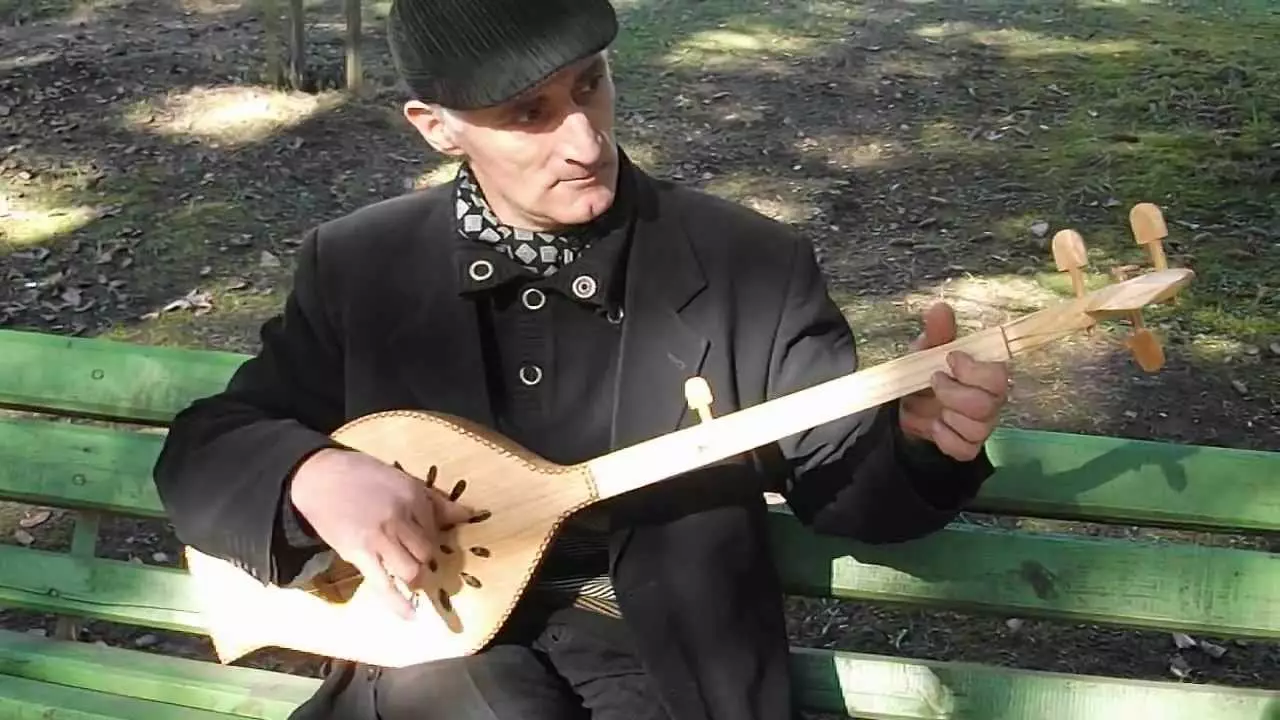
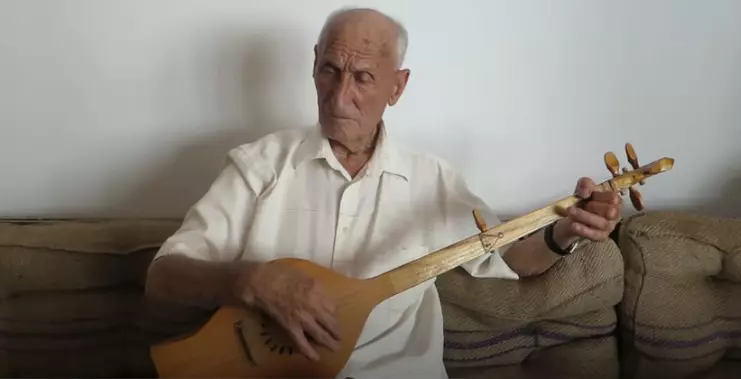
Peculiarities
The considered tool has its own characteristics that distinguish it from other similar products in the musical culture of the peoples of the world.
- Not so long ago, only horse hair was used in the manufacture of strings for Chonguri, and today it is not so relevant. Now the strings mainly use high-quality silk threads.
- On modern Chonguri you can play in different tones, which depends on the executable songs. However, individual melodies from beginning to end can be executed in the same tonality.
- Traditionally, the neck (neck) of Chonguri does not have divisions on the Lada (like a violin), but you can meet options and with freaks (like domra or guitar).
- To play on this instrument, fingers are used, holding chonguri in a vertical position on the left knee.
- The size of the product in length is approximately 100 cm (housing along with the neck and cervical head).

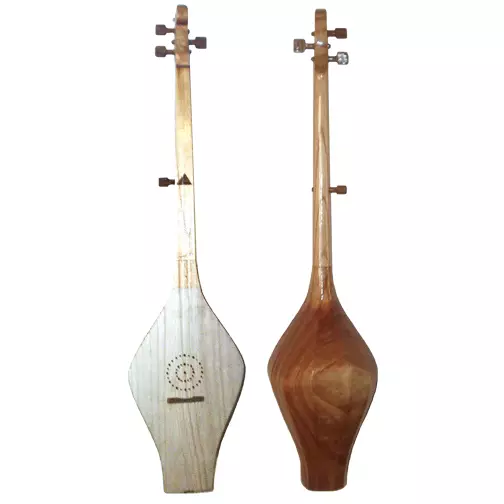
Probably the one who is interested in Chonguri will curious to learn the secret tool manufacturing. In the most thoughtful wind place chose the smoother tree without bitch (usually choose a linen tree). Mostly for Georgian Chonguri, a smooth part of the tree between the branches is used. With the curves of the wizard do not work.
The selected tree is cut, and the resulting log split in half. Every part is called "grandfather". Chonguri is made of them. The harvested tree are stored in a cool place (away from sunlight and drafts). Wood dries 30 days. If you do not wait for a complete dying of the material, the product will not get high quality. With a high probability, the tree cracks, the work of the master will be in vain.
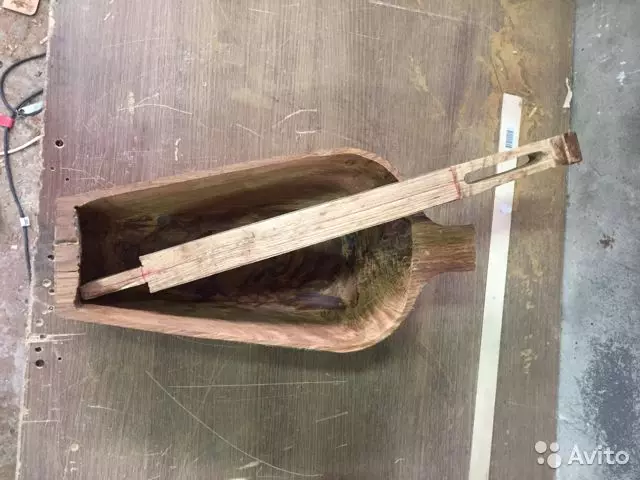
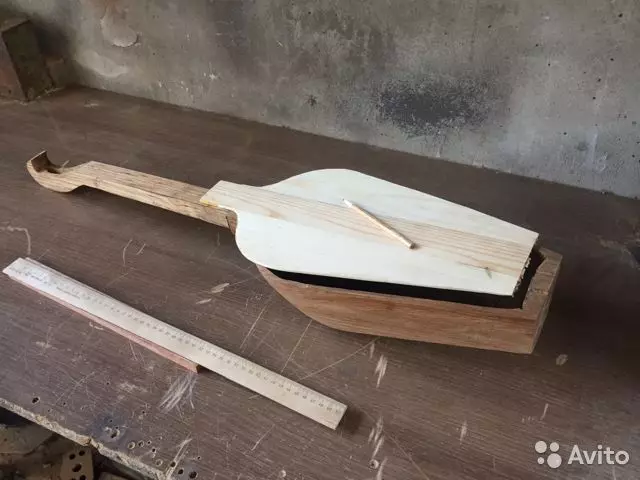

The grandfather is treated as: the chisel is removed, and then cleaned. Prepared in advance the front part is fixed to the prepared grandfather and keep a few hours. After that, on the neck, rivets are installed and strengthen the yoke (or bridge). Then the bracket is made on which the strings are fixed. On the bridge and bracket, four notches for laying of taut silk strings are separated.
For a ringing sound of Chonguri, the wood of the middle of the three-part tool deck should be pine.
The manufacture of one of this takes three days, which corresponds to the rules for creating this musical instrument.
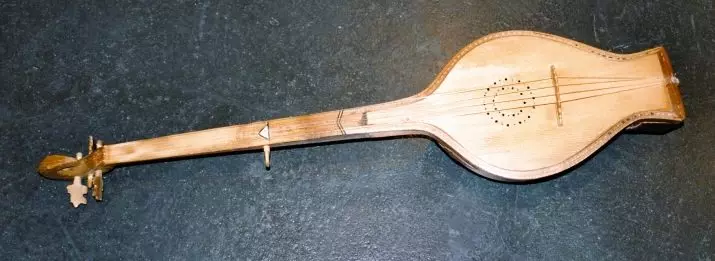
Structure
The length of Chonguri is an average of 100 cm. This indicator may differ in the range of 1.5-3 cm. Errors in size do not have a fundamental value for this object of art.
Chonguri design is pretty simple. It consists:
- from the housing;
- Neck (neck);
- cervical heads;
- Additional parts (bracket, yarm, rings for string fastening).
The housing is characterized by a smooth pear shape, truncated downstairs. For the manufacture of the housing, different breeds of wood - pine, mulberry, nut. On the top deck you can see a few small resonator holes. The neck of the tool is long, the neck of a short string is embedded into it, called "zili", and completes the design of the curved head with 3 slices and the same number of basic (long) strings.
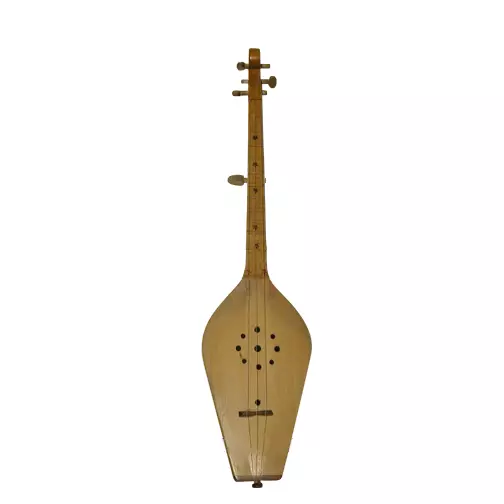

Chonguri is not exactly the same tool that Pandouri, although in some areas of East Georgia it is also called. And it's not just the number of strings. Pandouri always has division into the Lada. During the execution of the melody on Chonguri, the musicians lead their fingers from the bottom upwards, and when playing on the platforms, the movements are produced in the opposite direction. But they are functionally and externally similar. Both instruments mainly act as accompaniment, are used to accompany songs in the collective work of Georgian women. Equally, the tools are used in the conduct of vintage rites.
Chonguri housing is fragmentary constructed from thin woody plates, which allows you to achieve maximum thinning of the walls of the housing. They can be bent to create a greater volume of resonance, which positively affects the rubre and volume of the musical instrument.

For even more information about Chonguri, see the next video.
